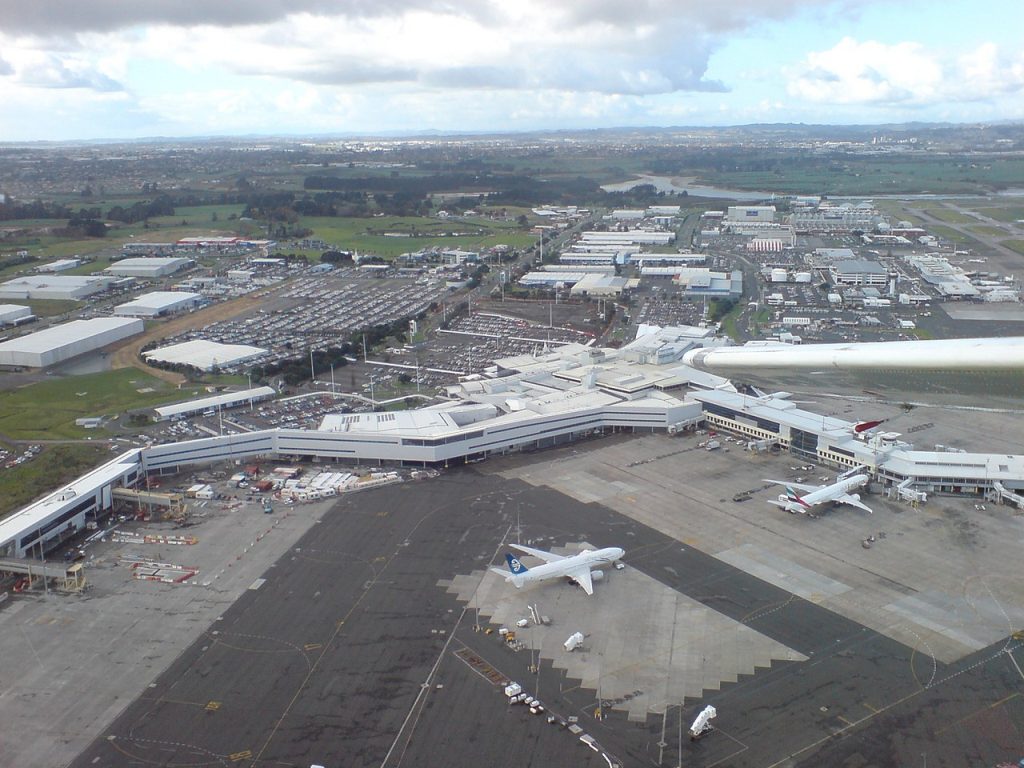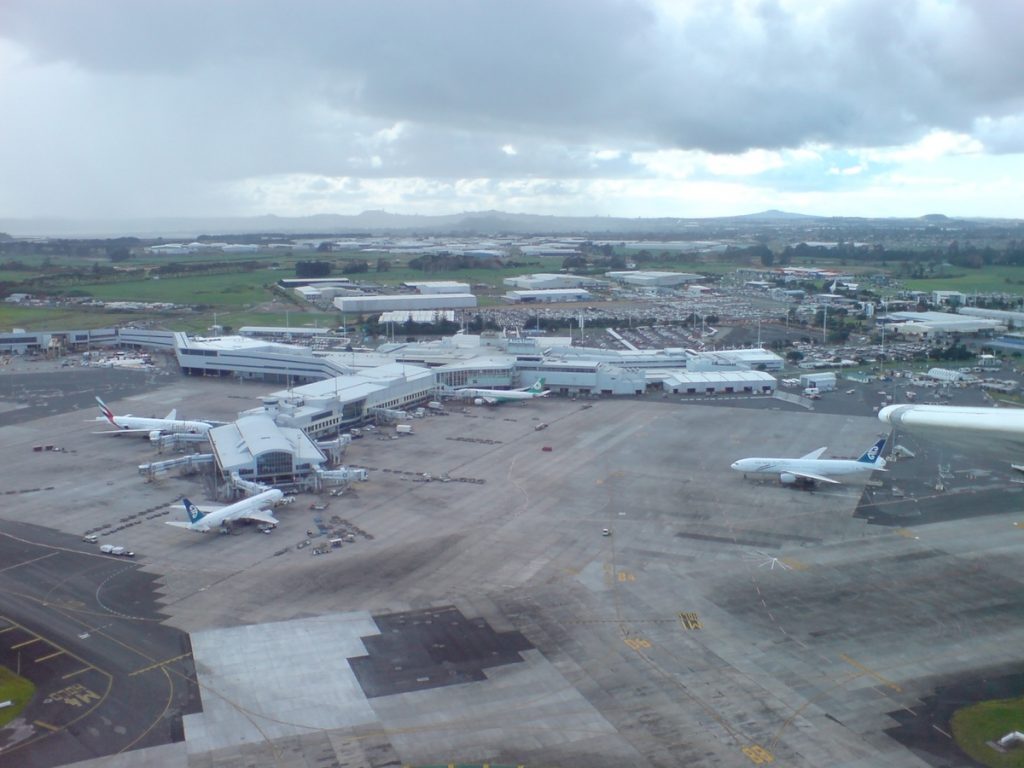
Auckland International Airport is New Zealand’s largest and busiest airport, serving as the main gateway for international and domestic travelers to and from the country. Located approximately 20 kilometers south of Auckland’s city center, the airport plays a pivotal role in the country’s transportation network, facilitating millions of passengers and tons of cargo each year. This article provides a comprehensive overview of Auckland International Airport, detailing its facilities, services, history, and significance.
Overview of Auckland International Airport
Location and Accessibility
Auckland International Airport is situated in Mangere, a suburb in the southern part of Auckland. The airport’s strategic location provides easy access to major highways, public transport, and key tourist destinations within the city and beyond.
- Address: Ray Emery Drive, Mangere, Auckland, New Zealand
- Public Transport: The airport is well-connected by bus services, shuttle vans, and taxis, with direct routes to Auckland’s city center and surrounding suburbs. Future plans include a light rail link to further enhance connectivity.
Airport Code
- IATA: AKL
- ICAO: NZAA
History and Development
Early Beginnings
Auckland International Airport’s origins date back to the early 20th century, with the original airfield established in 1928. The site was initially used for military training during World War II before transitioning to a commercial airport.
Modernization and Expansion
The airport has undergone significant expansions and upgrades since its inception:
- 1960s: The airport officially opened for commercial flights in 1966, with a new terminal building to accommodate international traffic.
- 2000s: Major expansions included the construction of a second runway and the modernization of both domestic and international terminals to handle increasing passenger numbers.
- Recent Developments: Recent projects have focused on enhancing passenger experience, including the introduction of automated check-in and security processes, expanded retail and dining options, and improvements to the airport’s infrastructure.
Future Plans
Auckland International Airport continues to evolve, with plans for further expansions to meet growing demand. Future projects include terminal upgrades, additional parking facilities, and enhancements to public transport links, including a proposed light rail connection to the city center.
Facilities and Services
Terminals
Auckland International Airport has two main terminals: the International Terminal and the Domestic Terminal, connected by a shuttle service and pedestrian walkway.
International Terminal
The International Terminal is the gateway for travelers arriving in or departing from New Zealand. It offers a wide range of amenities and services to ensure a comfortable and efficient travel experience:
- Check-In and Security: The terminal features self-service kiosks and traditional check-in counters, along with advanced security screening facilities.
- Duty-Free and Shopping: Passengers can enjoy a variety of duty-free shops, selling everything from luxury goods and electronics to local souvenirs and New Zealand wines.
- Dining Options: The terminal offers an array of dining choices, including international cuisine, fast food, and cafes.
- Lounges: Premium lounges such as the Air New Zealand Lounge, the Qantas Lounge, and the Emperor Lounge provide comfortable spaces for relaxation, complete with complimentary refreshments, Wi-Fi, and business facilities.
Domestic Terminal
The Domestic Terminal caters to flights within New Zealand and provides essential services for travelers:
- Check-In and Baggage Drop: Similar to the International Terminal, the Domestic Terminal offers self-service check-in kiosks and baggage drop facilities.
- Retail and Dining: The terminal has several retail outlets and food options, including cafes and quick-service restaurants.
- Convenience Services: Facilities include free Wi-Fi, charging stations, and car rental counters.
Transportation and Parking
Auckland International Airport provides various transportation and parking options to suit the needs of different travelers:
- Public Transport: The airport is accessible by several bus services, including the SkyBus, which provides frequent connections to the city center and other key locations.
- Shuttle Services: Shared and private shuttle services offer convenient door-to-door transport to and from the airport.
- Taxis and Rideshares: Taxis and rideshare options are readily available at designated pickup areas outside both terminals.
- Parking: The airport offers a range of parking options, including short-term, long-term, and valet parking. Advance booking is recommended, especially during peak travel periods.
Accommodation
Several hotels are located in and around Auckland International Airport, providing convenient options for travelers with early flights or layovers:
- Novotel Auckland Airport: Directly connected to the International Terminal, this hotel offers modern rooms, a fitness center, and a restaurant.
- Ibis Budget Auckland Airport: A budget-friendly option within walking distance of the terminals, offering basic amenities and comfortable rooms.
- Holiday Inn Auckland Airport: A short shuttle ride away, this hotel features spacious rooms, a restaurant, and an outdoor pool.
Passenger Experience
Check-In and Security
Auckland International Airport offers a streamlined check-in process with options for self-service kiosks and traditional check-in counters. Security screening is efficient, with multiple lanes to minimize wait times.
Customs and Immigration
The airport’s customs and immigration facilities are equipped to handle high volumes of passengers, ensuring quick and efficient processing for international arrivals and departures. Automated passport control gates are available for eligible travelers, speeding up the entry process.
Shopping and Dining
The airport provides a diverse range of shopping and dining options, catering to different tastes and preferences. Passengers can explore duty-free shops, luxury boutiques, and local souvenir stores, as well as a variety of dining outlets offering everything from gourmet meals to quick snacks.
Lounges and Relaxation Areas
Premium lounges offer a relaxing space for passengers to unwind before their flights, complete with comfortable seating, refreshments, and business facilities. The airport also provides quiet zones and relaxation areas for all travelers.
Accessibility and Services
Auckland International Airport is committed to providing an inclusive experience for all passengers, with a range of accessibility services and facilities:
- Mobility Assistance: Wheelchair services and assistance for passengers with reduced mobility are available on request.
- Accessible Facilities: The airport features accessible restrooms, elevators, and ramps throughout the terminals.
- Support Services: Staff are trained to assist passengers with disabilities or special needs, ensuring a smooth and comfortable travel experience.
Cargo and Freight Services
In addition to passenger services, Auckland International Airport is a key hub for cargo and freight operations, handling a significant portion of New Zealand’s air freight:
- Cargo Facilities: The airport features state-of-the-art cargo facilities, including warehouses, cold storage, and handling areas for perishable goods.
- Freight Services: Major freight carriers operate from the airport, providing connections to key international markets. Services include express delivery, freight forwarding, and logistics support.
Environmental Initiatives
Auckland International Airport is committed to sustainability and has implemented several initiatives to reduce its environmental impact:
- Energy Efficiency: The airport has invested in energy-efficient technologies, including LED lighting, solar panels, and electric vehicles.
- Waste Management: Comprehensive recycling and waste reduction programs are in place to minimize landfill waste.
- Sustainable Development: Future expansion plans prioritize sustainability, incorporating green building practices and reducing carbon emissions.
Travel Tips for Auckland International Airport
Arrive Early
To ensure a smooth travel experience, arrive at the airport at least three hours before international flights and two hours before domestic flights. This allows ample time for check-in, security screening, and any potential delays.
Check Flight Status
Stay updated on flight status through the airport’s website or mobile app, which provides real-time information on arrivals and departures, gate changes, and delays.
Pack Smart
Ensure your luggage complies with airline regulations for size, weight, and prohibited items. Pack essential items in your carry-on, such as medications, travel documents, and valuables.
Explore Amenities
Take advantage of the airport’s amenities, including lounges, shopping, and dining options, to make the most of your time before your flight. Many amenities are open 24 hours, catering to travelers at all times.
Use Transportation Options
Choose the most convenient transportation option for your needs, whether it’s public transport, a shuttle service, or a taxi. Pre-book parking if you’re driving to the airport to secure a spot and save time.
Conclusion
Auckland International Airport serves as New Zealand’s primary international gateway, offering a wide range of services and amenities to meet the needs of travelers. With its modern facilities, convenient location, and commitment to sustainability, the airport provides a seamless travel experience for both passengers and cargo. Whether you’re arriving, departing, or just passing through, Auckland International Airport ensures a pleasant and efficient journey.
